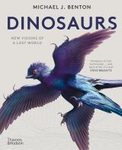Journal / Magazine
By: Thomas Reinecke(Author), Andrzej Radwański(Author), Fritz von der Hocht(Author), Leo Dufraing(Author), Louis Taverne(Author), John G Maisey(Author), Luigi Capasso(Author)
104 pages, 8 plates with b/w photos; 30 b/w illustrations, 4 tables
![Palaeontos 28 Palaeontos 28]()
Click to have a closer look
About this book
Customer reviews
Related titles
About this book
Fossil Sharks and Batoids from the Korytnica-Clays, early Badenian (Langhian, Middle Miocene), Fore-Carpathian Basin, Central Poland – A Revision and Updated Record
Based on new material of shark and batoid teeth collected from the early Badenian Korytnica Clays (Holy Cross Mountains, Central Poland) the fauna is updated and the previous data and taxonomy of Schultz (1977, 1979) is revised. The small fauna consists of 15 shark and 7 batoid species, four of which, Alopias exigua (Probst, 1879), Galeorhinus cf. goncalvesi Antunes et al., 1999, Pachyscyllium dachiardii (Lawley, 1876), and Dasyatis strangulata (Probst, 1877) are new for Korytnica and – except P. dachiardii – also for the Badenian of the Central Paratethys.
Fossil Basking Shark of the Genus Keasius (Lamniforme, Cetorhindiae) from the Boreal North Sea Basin and Upper Rhine Graben: Evolution of Dental Characteristics from the Oligocene to late Middle Miocene and Description of Two New Species
Basking sharks of the extinct genus Keasius Welton, 2013 occurred widespread during the Oligocene and Early to Middle Miocene in marine environments of the North Sea Basin, Upper Rhine Graben, Paratethys and adjacent regions. These sharks were equipped with a gill raker apparatus for filter-feeding (elongate modified denticles attached to the gill arches), and a heterodont dentition suitable for grasping / tearing small-sized prey. We have studied a comprehensive collection of teeth and gill rakers from 45 locations (quarries, borings, temporary excavations) in Rupelian to Serravallian deposits. Two new species are described: Keasius septemtrionalis sp. nov. from the early / middle Chattian Sülstorf Beds, Mecklenburg, northeastern Germany, and Keasius rhenanus sp. nov. from the late Burdigalian Lower Mica Finesand Formation, Lower Saxony, northern Germany. This study allows to document and interprete for the first time variations due to heterodonty in the dental morphology of Keasius parvus (Leriche, 1908) by means of abundant teeth collected from the Rupelian Alzey Formation, Mainz Basin, western Germany, and the Rupelian Boom Clay Formation, northern Belgium. Artificial tooth sets characterized by dignathic and disjunct-monognathic heterodonty, based on the "lamnoid tooth pattern“, are proposed for the three Oligo-Miocene species of Keasius and compared with reconstructed dentitions of the Late Eocene Keasius taylori proposed by Welton (2013).
A Third Longirostrine Gladiopycnodontid Fish Genus (Pycnodontiformes) from the Marine Late Cretaceous of Lebanon
The osteology of Stenoprotome hamata Hay, 1903 from the marine Late Cretaceous of Lebanon is studied in details. Its cranial and pectoral characters, its elongated snout and the scute-like scales of this strange fossil fish indicate that it is a member of the Gladiopycnodontidae, a highly specialized family of the order Pycnodontiformes, and not referable to the Saurichthyidae as previously thought. S. hamata exhibits a very long sword-like rostrum that is formed by the prefrontals and the premaxillae, with the upper margin of the toothless premaxilla sutured to the lower margin of the prefrontal. S. hamata belongs to the most evolved genera of the Gladiopycnodontidae, those having lost the nuchal horn present in the primitive species of the lineage. Stenoprotome Hay, 1903 shares with Gladiopycnodus Taverne & Capasso, 2013 and Rostropycnodus Taverne & Capasso, 2013 the apomorphic condition of having the rostrum extremely elongated. Stenoprotome and Gladiopycnodus share two other apomorphies, their dermosupraoccipital has a posterior margin with a strong spine and they possess large and deep dorsal ridge scutes. Stenoprotome differs from all the other gladiopycnodontid fishes in the presence of a long acuminate horn on each dermopterotic and of a large posterior horny process on the cleithrum.
Customer Reviews
Journal / Magazine
By: Thomas Reinecke(Author), Andrzej Radwański(Author), Fritz von der Hocht(Author), Leo Dufraing(Author), Louis Taverne(Author), John G Maisey(Author), Luigi Capasso(Author)
104 pages, 8 plates with b/w photos; 30 b/w illustrations, 4 tables


































![Palaeofocus 5: Revision der Miozänen Molluskenfauna (Hemmoorium) von Werder bei Achim (Nordwest-Niedersachsen) [Revision of the Miocene Mollusc Fauna (Hemmoorian) of Werder near Achim (Northwest Lower Saxony)]](http://mediacdn.nhbs.com/jackets/jackets_resizer_medium/24/240142.jpg?height=150&width=107)




